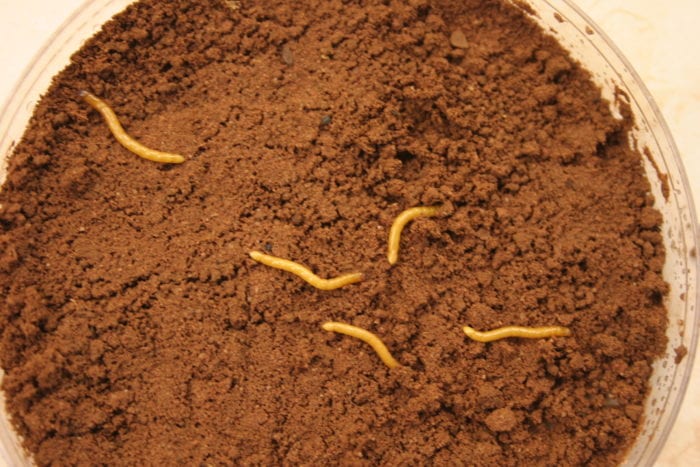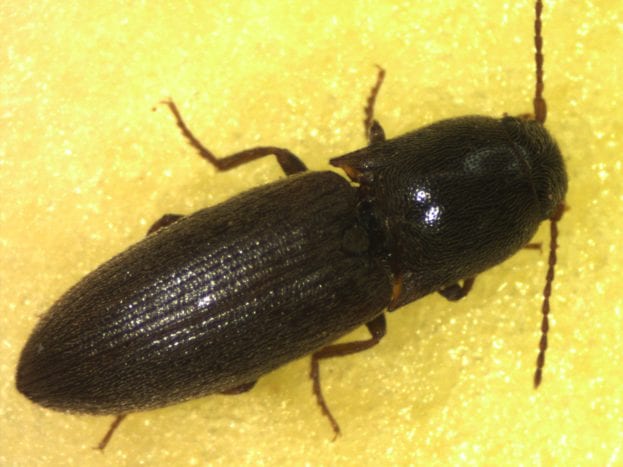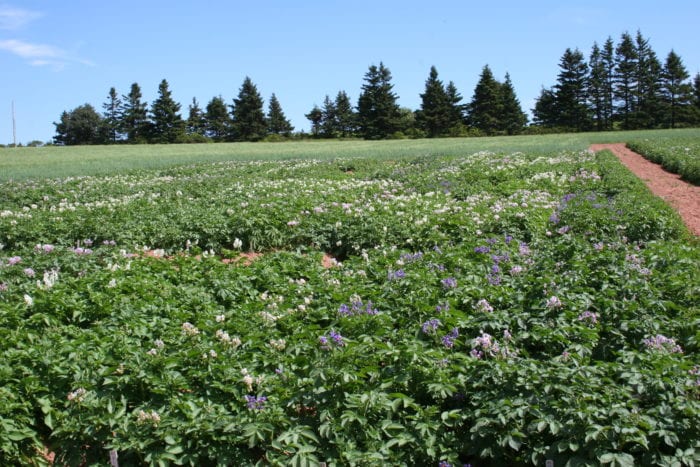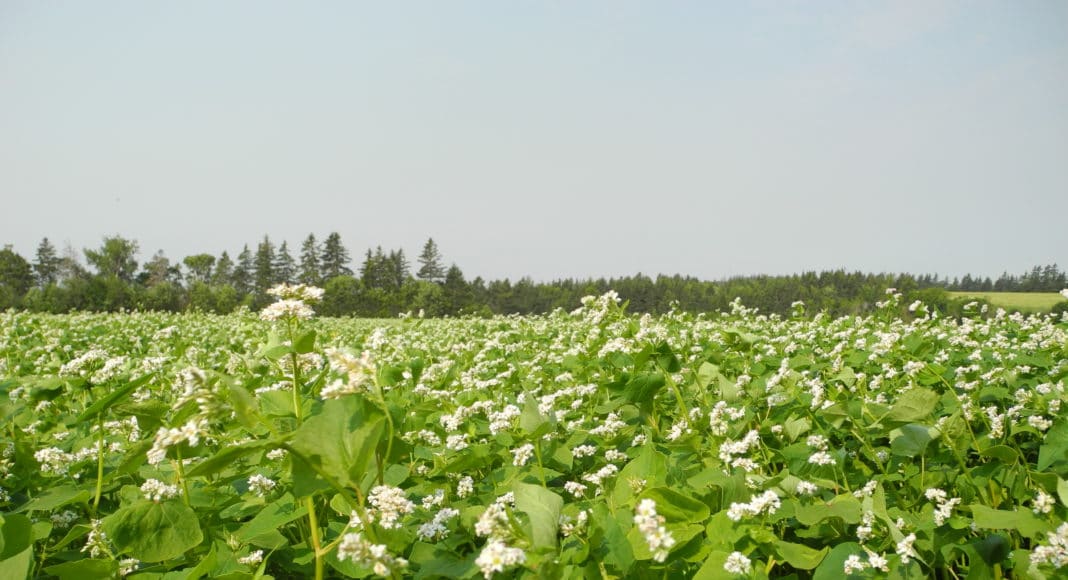Wireworm research is already helping farmers across Canada reduce populations in their potato fields, but the researchers are aiming to make that research easier to understand.
A decade ago, wireworms were becoming a problem on Klondike Farms in the Wilmot Valley on Prince Edward Island. John Hogg needed a solution to protect his 750 acres of potatoes and stop the financial losses.
Help was found during an information session in Charlottetown. Christine Noronha, a research scientist with Agriculture and Agri-Food Canada, was giving a presentation on how growing brown mustard could be beneficial for wireworm control. Hogg, along with his sons Adam and Bradley, who he farms with, were intrigued and approached Noronha about taking part in her field trials.
“She’s been working with us ever since doing different field trials, between incorporating mustard, growing it and clipping it, growing it and harvesting it,” Hogg says in a phone interview.

On Hogg’s farm he’s found mustard and buckwheat to be beneficial to reduce wireworm populations. Two years ago, he planted a potato crop on a field, which for the two previous years had been half planted to ryegrass and the other half to mustard. They applied an insecticide for wireworm control, Capture, during the growing season.
“When we come along to harvest, (Noronha) come and took her samples. And it was 50 per cent less (wireworm) damage where the mustard was grown,” Hogg explains.
The rotational crop study Noronha was completing on Hogg’s farm was part of the Canadian Potato Council’s (CPC) ongoing cluster research with the Canadian Horticultural Council through the Canadian Agricultural Partnership. The CPC is currently on its third research cluster and the wireworm group is working on expanding their integrated pest management (IPM) research with the plan of making a manual for Canadian potato growers.
The Pest
Wireworms have a long-life cycle; Noronha explains in a phone interview. The adults come out in the spring, lay their eggs and then die, which happens in the span of two months.
Once the eggs are laid, the larvae, which are called wireworms, hatch — the adults are click beetles. The wireworms live in the ground, under the soil, for as long as two to five years, depending on the species.
“Once a field has wireworms in it, you have to control the wireworms. Otherwise in five years, they come out as adults and they lay more eggs,” Norohna says.
Wireworms have become more of a problem in Canada over the years as populations have increased and feasted on various crops. In potatoes they eat holes in the tubers and reduce the overall quality of the crop.

“There are some European species that have been causing a lot of damage in British Columbia and in Prince Edward Island. But now the species that are also in Alberta, are starting to cause problems and in Quebec and in Ontario as well,” Norohna adds.
As populations have increased and crop damage has become worse it has been important to understand more about wireworms, their lifecycles and how to control them through chemical and non-chemical means, Ryan Barrett, research and agronomy specialist with the P.E.I. Potato Board, says in a phone interview.
In the previous two research clusters, Noronha’s team have been able to do an analysis on chemical products available for wireworm control which has helped Health Canada’s Pest Management Regulatory Agency to approve new products for use in Canada. The group has also completed comprehensive surveys of wireworm populations across Canada, which has helped growers understand how much of a problem the pests are. They’ve also done extensive work on wireworm control through methods such as rotational crops and biological control.
Wireworm Research Team
- Christine Noronha at Charlottetown Research and Development Centre: researching insecticides, rotational crops biology, wireworm and click beetle biology and behaviour, pheromones and surveying populations in P.E.I.
- Gerhard Gries at Simon Fraser University: extracting pheromones and identifying them
- Haley Catton at the Lethbridge Research and Development Centre: researching rotational crops
- Ian Scott at the London Research and Development Centre: researching insecticides and rotational crops
- Wim van herk at the Agassiz Research and Development Centre: researching insecticides, pheromones and surveying species across Canada
Working on a Manual
Norohna’s team’s wireworm research has already helped growers across Canada, but they’ve discovered wireworm control isn’t just about doing one thing, it’s about controlling populations through a number of different strategies.
“Every year you have to do something, so that’s what we want to develop at the end,” Norohna explains. We want “to give the farmers all the options that they have for every year of their production cycle. What can they do in order to keep on top of this insect and not let it get of control?”

The group is working on creating an integrated pest management (IPM) strategy which they plan to share through a written manual. They are currently in the third year of the five-year research cluster.
While the overarching goal is to create a centralized IPM manual, the group is still completing research work such as isolating pheromones from wireworm species to use for monitoring populations.
Continuing Research
Pheromones are chemicals which females use to attract males. The researchers have learned what these pheromones are and are using them to attract male click beetles, trap them and remove them from the population. However, so far the known pheromones are mostly from European wireworm species, the researchers are working to identify pheromones from other species in Canada.
The researchers have also looked into metarhizium as a biological control for wireworms. There are large scale field trials being done to find if it works against all species of wireworms, or only specific species.
“My colleague has looked at using these pheromones to actually attract click beetles to areas where there is metarhizium,” Norohna says.
Research work is also still being done on rotational crops, new insecticides and surveying of wireworm populations across the country.











